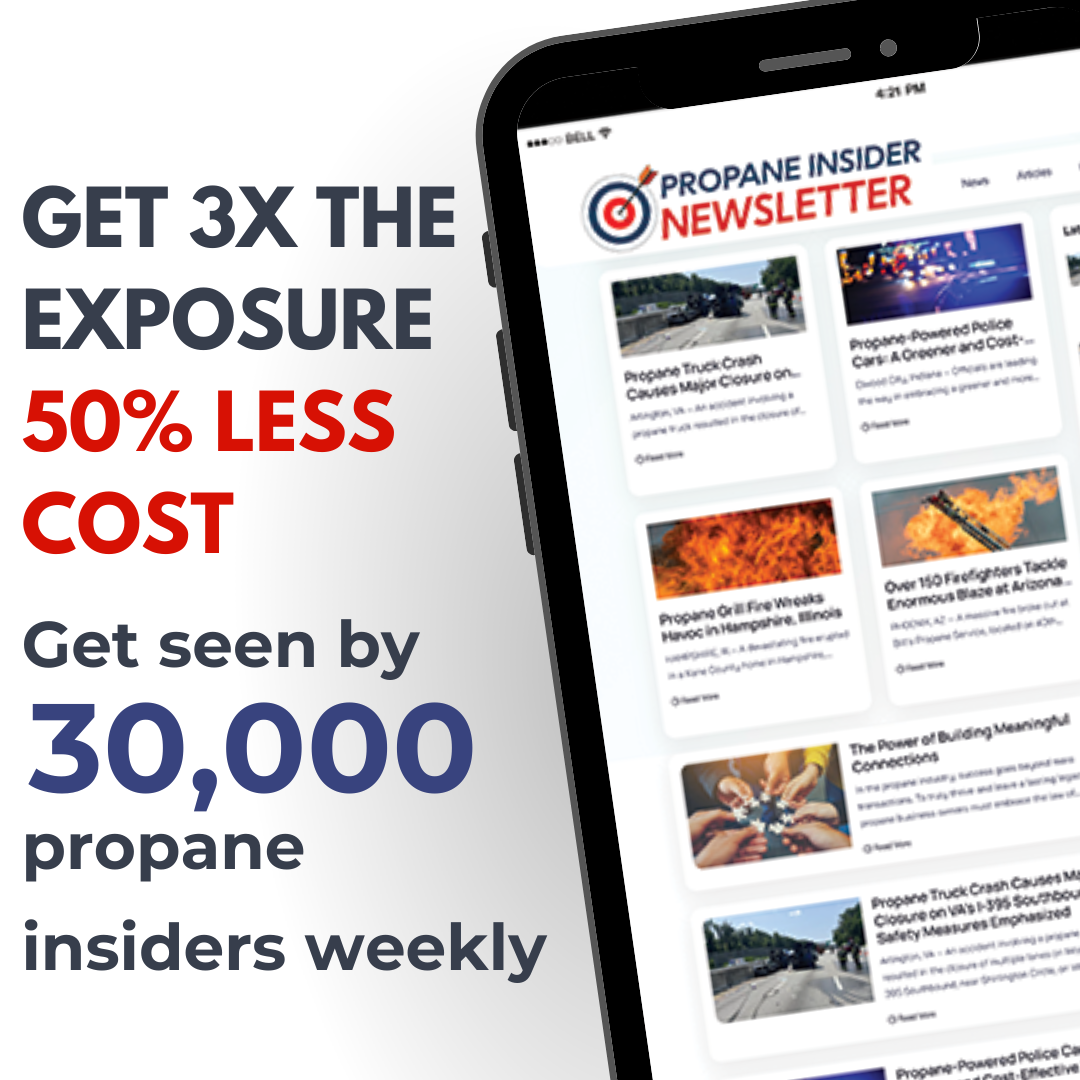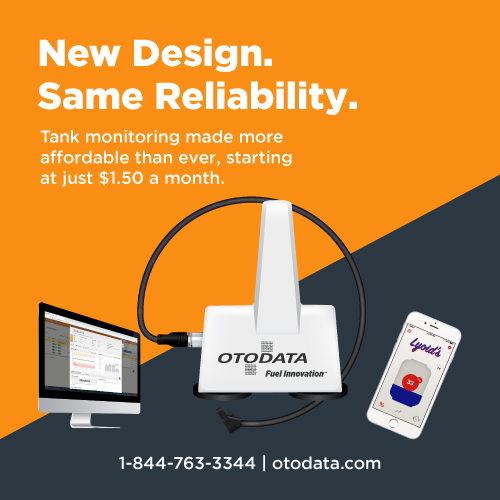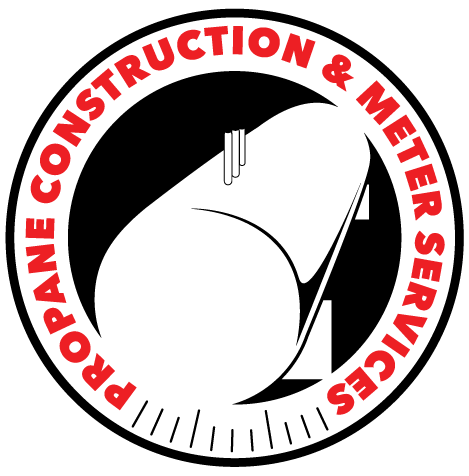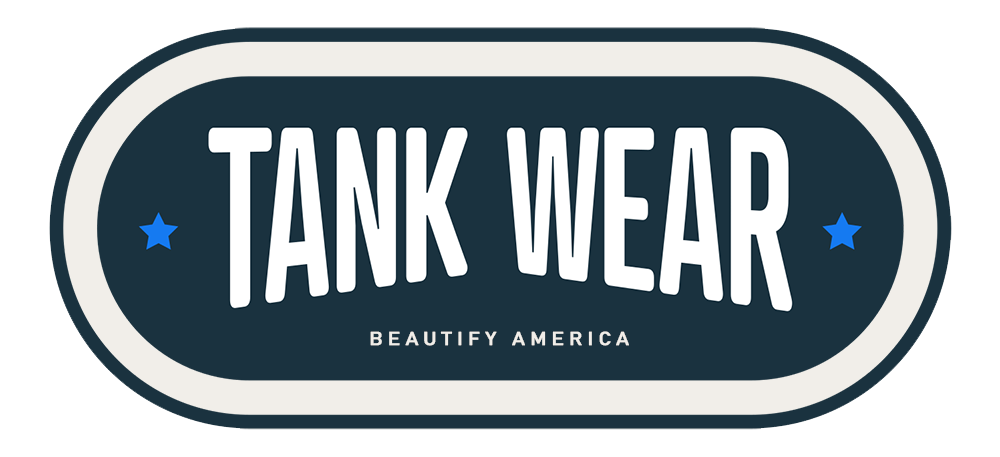Tank Monitoring: A Win-Win for Fuel Companies and Customers
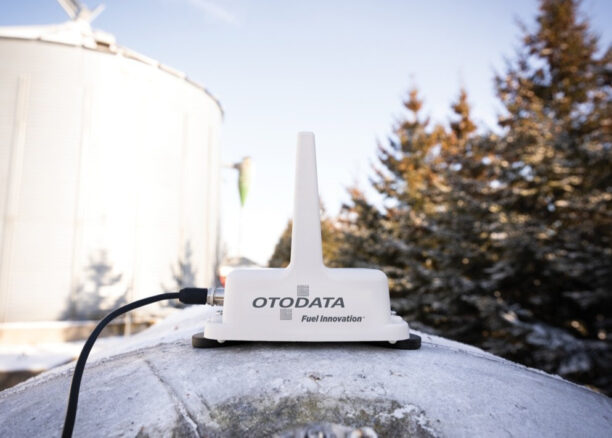
For companies that deliver heating oil and propane to homes and businesses, optimizing logistics is key to improving efficiency and profitability. At the same time, customers expect reliable fuel supply without the inconvenience and potential hazards of runouts or overfills.
Tank monitoring technology offers a solution that benefits both fuel marketers and their customers. By providing real-time data on fuel levels in storage tanks, monitors enable a more proactive, streamlined, and customer-friendly delivery process.
According to Gray, Gray & Gray’s 2023 Energy & Propane Survey, more than 72% of propane dealers offer tank monitoring to their customers (at an average per tank fee of $54.32) and just over 36% of heating oil dealers offer the same service (at an average fee of $26.53).
How Tank Monitors Work
A tank monitor is installed on an above or below-ground fuel storage tank. Using wireless technology, it transmits data on remaining fuel volume to a centralized dashboard that the delivery company can access. Additional data points may include:
• Low level alerts when the fuel drops below a minimum threshold
• Estimated days until empty based on usage rates
• Precise GPS location of the tank
• Ambient and fuel temperature
• Available space in the tank (ullage)
• Any technical issues with the monitor itself
Having this information continuously updated and accessible allows fuel providers to know the current status of every monitored tank across their customer base at a glance. Customers can also access their tank data through a dedicated mobile app.
Benefits for Fuel Delivery Companies
The insights gleaned from tank monitors help fuel marketers plan and execute deliveries far more efficiently. Traditionally, scheduling has relied on rough estimates, seasonal factors, and reactively responding to will-call customers. This leads to suboptimal routing as well as costly runouts and emergency deliveries.
With monitors in place, providers can be proactive rather than reactive. Hard data on fuel levels and consumption rates allows them to anticipate when tanks need to be refilled and schedule deliveries at optimal times. Dispatchers can group tanks that are ready for refills based on proximity, ensuring value fills that minimize miles driven while maximizing volume delivered.
The result is dramatically streamlined routing and logistics, leading to higher earnings that are used as the benchmark to determine enterprise value for the business such as:
• Fewer miles driven overall: Optimal routing that is supported by more accurate tank measurement creates more efficient delivery routes, resulting in less wear-and-tear on delivery trucks and drivers. Less wear and tear means less vehicle expenses which in turn increases profitability.
• More gallons delivered per mile, with more efficient drop sizes: A more accurate picture of how much fuel a customer truly needs leads to more timely deliveries and fewer “top-offs.”
• Reduced labor costs, including fewer dispatchers: The more customers you can place on monitors, the better able you will be to allow monitor data to dictate routing, rather than having a dispatcher or delivery manager manually generate routes for the day.
• Improved customer retention: A customer whose tank is monitored is a “stickier” customer who is more likely to become an automatic customer (worth much more than a will-call customer when valuing a business), with virtually no runouts or emergency deliveries marring their experience.
• Higher resale value: Fuel companies that implement tank monitoring often see increased value to their business – the more tanks monitored, the more attractive the company becomes to buyers, particularly in larger operations.
Fuel marketers who have adopted this technology report savings of up to 30% in operational costs by reducing the number of deliveries, optimizing routes, and improving the overall efficiency of their delivery operations, with acceptance ranging from 25% to 90% of their customer base. These savings on operating costs drop to the bottom line.
Benefits for Customers
For fuel customers, the main advantages of tank monitoring are convenience, reliability, and peace of mind. Even the most diligent customer may forget to check tank levels or could be caught off guard by unexpectedly high usage during a cold snap.
With a monitored tank, that burden is lifted. Low level alerts notify both the customer and the delivery company when it’s time for a refill, greatly reducing the risk of a runout. Customers can go about their lives with confidence their fuel supply will be maintained.
For customers who normally need to check their tanks manually, the mobile app provides an easy way to track their fuel 24/7. No more trudging through the snow or into a dank cellar to read a gauge. And if they’re going to be away from home for an extended period of time, they can travel worry-free knowing the app will alert them and their fuel company if levels get too low.
Tank monitors also solve challenges for customers with tanks that are not easily accessible or frequently checked. Wireless monitoring is ideal for remote and secondary residences, agricultural operations, construction sites, and the like.
By reliably preventing runouts, providing a better customer experience and fostering two-way communication, tank monitoring helps fuel marketers strengthen customer relationships and loyalty over the long run. It’s a sticky service that greatly improves retention.
The Future of Fuel Delivery
As fuel delivery becomes a technology-driven business, tank monitoring is increasingly a must-have capability for companies that want to remain competitive and continue growing. Forward-thinking fuel marketers are already connecting the dots between the granular data provided by tank monitors and back-office functions. For example, they are integrating accurate forecasts of when tanks will be ready for delivery into purchasing and inventory decisions.
Down the road, there is potential to augment monitoring with analytics, AI, and machine learning to extract even more value from the data. The endgame is a fully automated, optimized, and dynamic fuel delivery ecosystem.
Even at the basic level, tank monitoring creates a win-win dynamic between the fuel provider and their customer. The question really boils down to this… Which companies will seize the opportunity to streamline their operations, create a better customer experience, and boost their bottom line?
ABOUT OTODATA
Otodata has been a key player in the tank monitoring industry for over ten years. Otodata’s goal has always been to produce a monitor with very low cost of ownership — making large scale implementation affordable for all fuel resellers. Otodata is proud to say they design, develop, manufacture, and sell their award-winning tank monitors, management software, and mobile app to businesses worldwide. All Otodata monitors provide precise, extremely reliable data, carry industry-leading warranties, and are compatible with all read-ready dial equipped tanks. To learn more about this innovative and forward-thinking company, visit the Otodata Website today. 
Otodata Canada
1212 Louvain Ouest
Montreal, Quebec, H4N 1G5, Canada
Customer Support:
(844) 763-3344,
info@otodata.com

